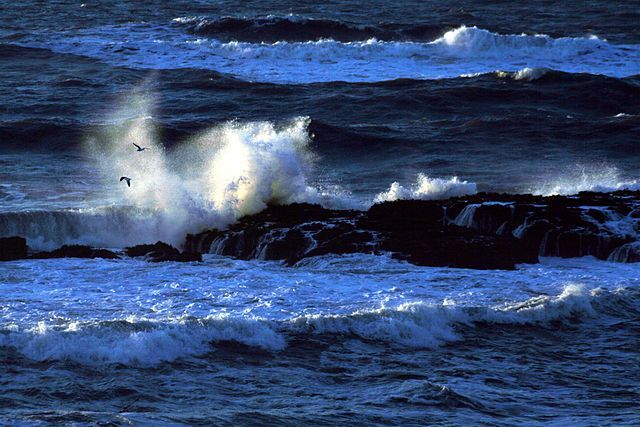
Imagine the power of the ocean, converted into electricity that’s completely renewable
Renewable energy isn’t just a good idea. More and more, it’s becoming mission critical for survival, at least as we know it. But new technology has arrived that might be another answer.
Traditional methods of producing electricity have their problems, which most everyone knows too well. But what if the very clean, renewable source of electricity that we need has been there all the time, and the only thing missing has been a method to capture it? According to Engineering.com, that’s what the engineers at BioWave are counting on.
Wave Energy From the Ocean
If there’s one constant about the seas, it’s that they’re always in motion. Much like the wind, which we already harness using wind turbines, oceans move with a tremendous amount of force. The problem has been that no one knew of a way to use the power of the ocean for creating electricity.
But the engineers at bioWave have figured it out, or at least they’ve come very close. Their technology is unobtrusive, because it stays submerged, and it responds to the environment both to produce electricity and to protect itself against storm conditions. So it’s powerful (literally) and smart.
How bioWave Technology Works
The bioWave system behaves similar to seaweed. The base sits on the ocean floor, and hinged, “inverted pendulums,” which are similar to a turbine’s blades, move back and forth with the ocean’s movement. With each sway of the pendulums, the generator gets a dose of energy from the power of the ocean.
Watch it in action:
One concern was how to protect the expensive equipment through rough weather. But bioWave seems to have that figured out, too. The protective system works like a submarine’s ballast system with on-board sensors that react to turbulent seas. They trigger the pendulums to fill with water, which allows them to lower and lie flat against the ocean floor. When the rough weather has passed, the sensor triggers the a compressor to force out the water, the pendulums re-inflate, and it’s back to business as usual.

The future looks brighter with clean, viable, renewable energy.
Trials Begin in Australia this Fall
After nearly 10 years of research and development, the first bioWave real-time test is set for November off the southern Australia coast. The plan is to observe and test the bioWave system for at least a year, which will give engineers enough data to understand its strengths and weaknesses and move into development of a commercial-size unit.
The conversion of the ocean’s power into electricity is the whole point of bioWave. This system has an “O-Drive,” which is a hydraulic motor that self adjusts to surrounding conditions and supplies a 250 kW generator. This enables the bioWave to produce “grid-ready” power. The O-Drive is also detachable, which means maintenance only requires bringing up the motor, not sending down a crew.
The bioWave isn’t completely new technology. It’s built on several well-established technologies, and just uses them in a new way. For example, its automation comes from industrial robotics. Some of the fabrication materials were originally used in aerospace technology. And of course its self protection is based on submarine ballast systems.
bioWave might not be the final say in harnessing the power of the sea, but it’s definitely the best solution so far. And by this fall, the engineers who designed and developed this new technology will have a much better idea about whether it’s a realistic way to produce renewable energy, all from something so large and so powerful that’s been under our noses the whole time.
Engineers make the world go round, and professional development hours keep technology moving forward. The next time you have credits due, check our out courses. We take the hassle out of continuing education so that you can get back to the things that you love to do.
Image credit: Pacific Ocean, by TheBrokenInaGlory, via Wikimedia Commons.






